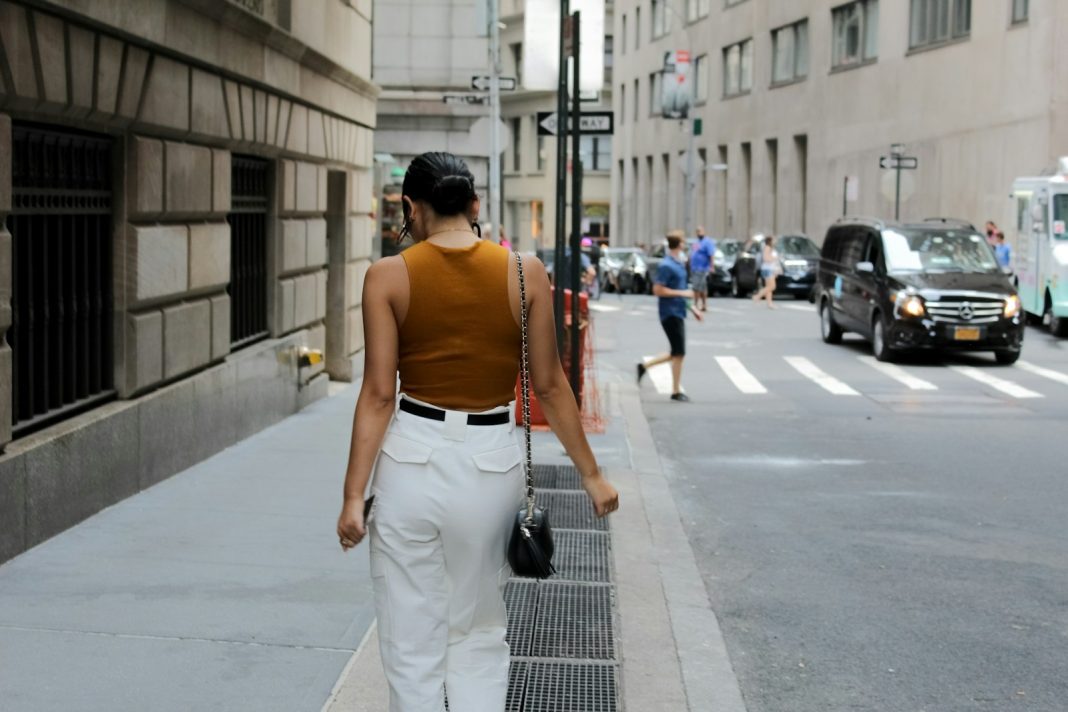In today’s fashion landscape, one trend has become more than just a fleeting moment—it’s a movement. Mixing high fashion with everyday street style is not only accepted but celebrated as one of the most authentic expressions of personal style. It’s an aesthetic that defies the rules of traditional dressing, where designer heels meet vintage denim, and a luxury blazer pairs seamlessly with a graphic tee. The lines between the runway and the sidewalk are blurred, and that’s exactly the point.
This fusion reflects a broader cultural shift: one where individuality, practicality, and creative self-expression are valued as much as status or heritage. It’s not about having the most expensive clothes in your closet, but how you wear them, what you mix them with, and how confidently you carry them. Celebrities, influencers, and even off-duty models have embraced this eclectic, balanced approach to style—merging the elegance of haute couture with the raw authenticity of streetwear.
But mixing high fashion with street style is more than just throwing on a designer handbag with sneakers. It’s an art form that requires an understanding of contrast, confidence in experimentation, and above all, a strong sense of self. Let’s break down how this high-low harmony has taken over the fashion world, and how anyone can master the blend.
- The Rise of Fashion Democracy
Once upon a time, fashion was exclusive. Designer pieces were reserved for runways, red carpets, and the elite. Street style, by contrast, was born from subcultures—skaters, hip-hop communities, punk rockers—groups who created their own aesthetics outside the luxury fashion system. But today, these worlds collide regularly, thanks in large part to cultural evolution and the power of social media.
Luxury fashion brands now look to the streets for inspiration. Designers like Virgil Abloh (Louis Vuitton), Demna Gvasalia (Balenciaga), and Kim Jones (Dior Men) have all brought streetwear into the couture conversation. High fashion houses are collaborating with sneaker brands and streetwear labels, creating capsule collections that sell out in minutes. Think Gucci x Adidas, Fendi x Fila, or Supreme x Louis Vuitton—proof that the blend of high and low fashion is not only stylish but profitable.
- Contrast is Key: Opposites Attract
One of the defining features of mixing high fashion with street style is contrast. It’s about unexpected pairings that strike a visual chord—structured meets slouchy, polished meets rugged, refined meets raw. Picture a silk Chanel blouse tucked into distressed Levi’s. Or a tailored Balmain blazer layered over an oversized hoodie and biker shorts. It’s these contrasts that breathe life into an outfit.
The juxtaposition works because it challenges expectations. You’re not dressing head-to-toe in luxury, nor are you abandoning refinement entirely. Instead, you’re creating a narrative that feels lived-in, attainable, and current.
Start with one elevated piece—a trench coat, designer bag, or a pair of statement heels—and build the rest of your outfit around it using casual, comfortable staples. A $1,200 handbag doesn’t need a matching dress; it shines even brighter next to a thrifted band tee and dad jeans.
- The Power of Accessories: Designer Details, Everyday Impact
If investing in high-end clothing pieces feels out of reach, accessories offer an accessible way to introduce luxury into your daily wardrobe. A designer belt, structured bag, or statement sunglasses can instantly elevate the simplest outfit. Even a sleek watch or logo-laden cap adds polish without overwhelming your look.
Fashion insiders know that it’s often the smallest details that make the biggest difference. Streetwear often plays up accessories—beanies, backpacks, chains—so pairing these with a minimalist, high-fashion outfit can create an interesting reversal. Flip the script: use your accessories to bridge the gap between high and low, formal and casual.
Keep in mind that not everything needs to shout. The magic lies in balance—let one or two statement items carry the outfit, and allow the rest to speak in subtler tones.
- Sneakers: The Ultimate Equalizer
In the realm of blending high and low fashion, sneakers are arguably the most important and versatile item. Once considered gym-only wear, sneakers have become a staple in high-fashion circles. From runways to front-row seats, luxury sneakers now command just as much attention as stilettos.
Designers have embraced the trend full-force. Balenciaga’s Triple S, Gucci’s Ace, and Dior’s B27s have all become icons in their own right. But even classic street staples like Nike Air Force 1s or Converse Chuck Taylors are paired with tailored suits or silk dresses today.
The beauty of sneakers is their democratic appeal. They add a grounded, approachable edge to even the most formal outfit. Pair them with a pencil skirt, a structured coat, or a jumpsuit, and you’ve struck the perfect balance between fashion-forward and functional.
- Tailoring Meets Streetwear: A New Kind of Sharp
Another popular formula in the high-street mix is combining streetwear with sharp tailoring. A boxy blazer over joggers. Wide-leg trousers with a cropped hoodie. A structured button-down shirt worn open over a graphic tee. These hybrids exude both sophistication and cool.
Tailoring adds formality to casual pieces, while streetwear injects comfort and attitude into classic shapes. This contrast reshapes how we view formalwear—it becomes adaptable, less rigid, and more expressive.
To pull off this look, focus on fit. Oversized pieces should still have intentional lines. Don’t be afraid to mix silhouettes—pair slim pants with a bulky hoodie, or a boxy coat with a form-fitting dress underneath.
- Influence from the Streets: Real Style, Real People
What makes this trend so influential is its origin: the streets. Some of the most iconic high-low looks aren’t born in designer studios, but in urban neighborhoods, at music festivals, or on Instagram. The global street style scene—spanning Tokyo, Paris, New York, and Seoul—has inspired high fashion’s reinvention.
Influencers, not just celebrities, are driving this trend forward. They show us how to re-wear, restyle, and remix items to feel both aspirational and attainable. It’s no longer about owning head-to-toe designer looks—it’s about making fashion personal and dynamic.
Even brands have taken notice. Lookbooks and ad campaigns now feature diverse, relatable models styled in urban-inspired outfits that combine designer labels with sneakers, denim, and streetwear staples.
- Confidence Is Your Best Accessory
The most essential ingredient in mixing high fashion with streetwear? Confidence. This trend thrives on individuality and personal flair. It’s about owning your outfit, no matter how unconventional. That means breaking traditional fashion rules, trusting your instincts, and wearing your choices with pride.
Don’t be afraid to experiment. Try layering pieces you wouldn’t normally pair. Mix patterns and textures. Play with gender-neutral shapes, vintage finds, or luxury resale pieces. Some of the most striking outfits come from unexpected combinations—where personality outweighs perfection.
Confidence also means rejecting the pressure to look polished all the time. The high-low blend celebrates imperfection. It’s okay if your jeans are ripped, or your tee is oversized. That’s part of the appeal—it feels real, wearable, and rooted in self-expression.


